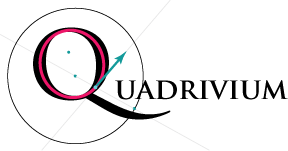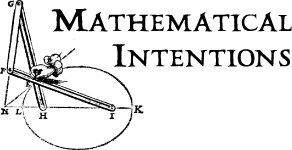Van Schooten's rhombus linkage for parabolas
Move point G to trace the parabola.
Frans Van Schooten published Exercitationum Mathematicorum in 1657; it was a textbook explaining the material in Rene Descartes's Geometry in an understandable way.
This applet shows Van Schooten's illustration of a machine for drawing parabolas. Physically, the rhombus is necessary; mathematically, all that is needed is the perpendicular bisector of segment BG, or, equivalently, a (variable) isosceles triangle with base BG. The rhombus ensures that points F and H lie on the perpendicular bisector of BG.
Note how accurate Van Schooten's drawing is. Physically, the rhombus could not close completely because of the connectors at B and G. This doesn't happen within the rectangle of the picture. Zoom out, and you can drag G so that the rhombus disappears.
Susan Addington, Created with GeoGebra |

